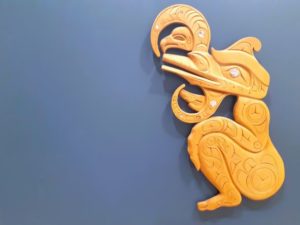
BC’s First “Consent-Based” Agreement under DRIPA
By Kajia Eidse-Rempel
Overview
On June 6, 2022, Tahltan Nation became the first Indigenous nation to sign a consent-based agreement with BC under section 7 of BC’s Declaration on the Rights of Indigenous Peoples Act (the “Declaration Act”).[1] The agreement relates to a single project, the Eskay Creek gold and silver mine (the “Project”) and provides a process by which Tahltan will conduct its own assessment of the Project and determine whether to provide its free, prior and informed consent. Tahltan’s consent is required for the Project to proceed.[2]
Consent and BC’s Environmental Assessment Process
Section 7 of BC’s Declaration Act has been described by the Province as a mechanism for negotiating joint decision-making with Indigenous governments. Tahltan’s agreement builds on the existing environmental assessment process under the BC Environmental Assessment Act (EAA). The agreement commits BC to ensuring the EAA process actually obtains the free, prior and informed consent, for one project and with respect to one Indigenous nation.[3]
The EAA process for “reviewable projects” is divided into several distinct stages throughout which consent of impacted Indigenous nations is “sought” by the Environmental Assessment Office (EAO). After the assessment is completed, if the EAO project recommendation does not align with an Indigenous nation’s consent or lack of consent, the Minister must offer to meet with the nation to seek consensus prior to making a decision.
Following the Minister’s offer to meet, the project may be approved with or without Indigenous consent, with one exception. Under EAA s. 7(b), a project may not proceed without consent if there is a treaty or other governmental agreement that requires the consent of that Indigenous nation. Tahltan’s agreement expressly states that it is a s. 7(b) EAA agreement and therefore, if Tahltan’s consent is not provided (following dispute resolution efforts as set out in the agreement) the Project will not proceed.
Tahltan’s agreement also provides that if, against all odds, Tahltan does not consent to the Project and the Project proceeds anyhow (presumably because a dishonourable federal government or a rogue provincial Minister approves it), BC promises to help identify enforcement options:
In the event that [Tahltan] does not consent to the Project, and either Party determines that there is or is likely to be a contravention of subsection 7(b) of the EA Act, the Parties will work together to identify what actions may be taken under the EA Act or otherwise to compel compliance.[4]
The agreement sets out a variety of factors and information sources to be considered as part of Tahltan’s assessment of the Project, which include consideration of Tahltan knowledge, the EAO draft assessment report, and input from the public and Tahltan community.
Looking Ahead
Will the Tahltan consent-agreement model be followed by a flurry of similar agreements? Consideration of the details and circumstances raise questions about its replicability and about whether BC is truly ready to move beyond narrowly-defined, opportune nods to the United Nations Declaration on the Rights of Indigenous Peoples and free, prior, and informed consent.
The Tahltan agreement took about a year to negotiate and was built upon previous reconciliation agreements between Tahltan and BC, including an agreement that provided Tahltan with $20 million to address self-governance and mineral development in its territory. Tahltan is an investor in the Project proponent, Skeena Resources, and therefore has some financial stake in the Project.[5]
The Province hasn’t exactly stuck itself out on a limb on this one. Nevertheless, the active role, capacity-building opportunity and decision-making authority that Tahltan has negotiated for itself under the agreement is commendable and will hopefully pave the way for others.
[1] Available online: https://www2.gov.bc.ca/assets/gov/environment/natural-resource-stewardship/consulting-with-first-nations/agreements/declaration_act_consent_decision-making_agreement_for_eskay_creek_project.pdf.
[2] Agreement, s. 4.3: “The consent of TCG, provided in accordance with this Agreement, is required for the Project to proceed within the Consent Area.”
[3] The Tahltan Nation is comprised of two bands, the Iskut Band and Tahltan Band, and has approximately 5000 members. Tahltan’s territory covers approximately 11% of British Columbia, at 95,933km2, which makes it larger than Portugal.
[4] Agreement, s. 4.9
[5] See Skeena website: https://skeenaresources.com/investors/investment-highlights/.
